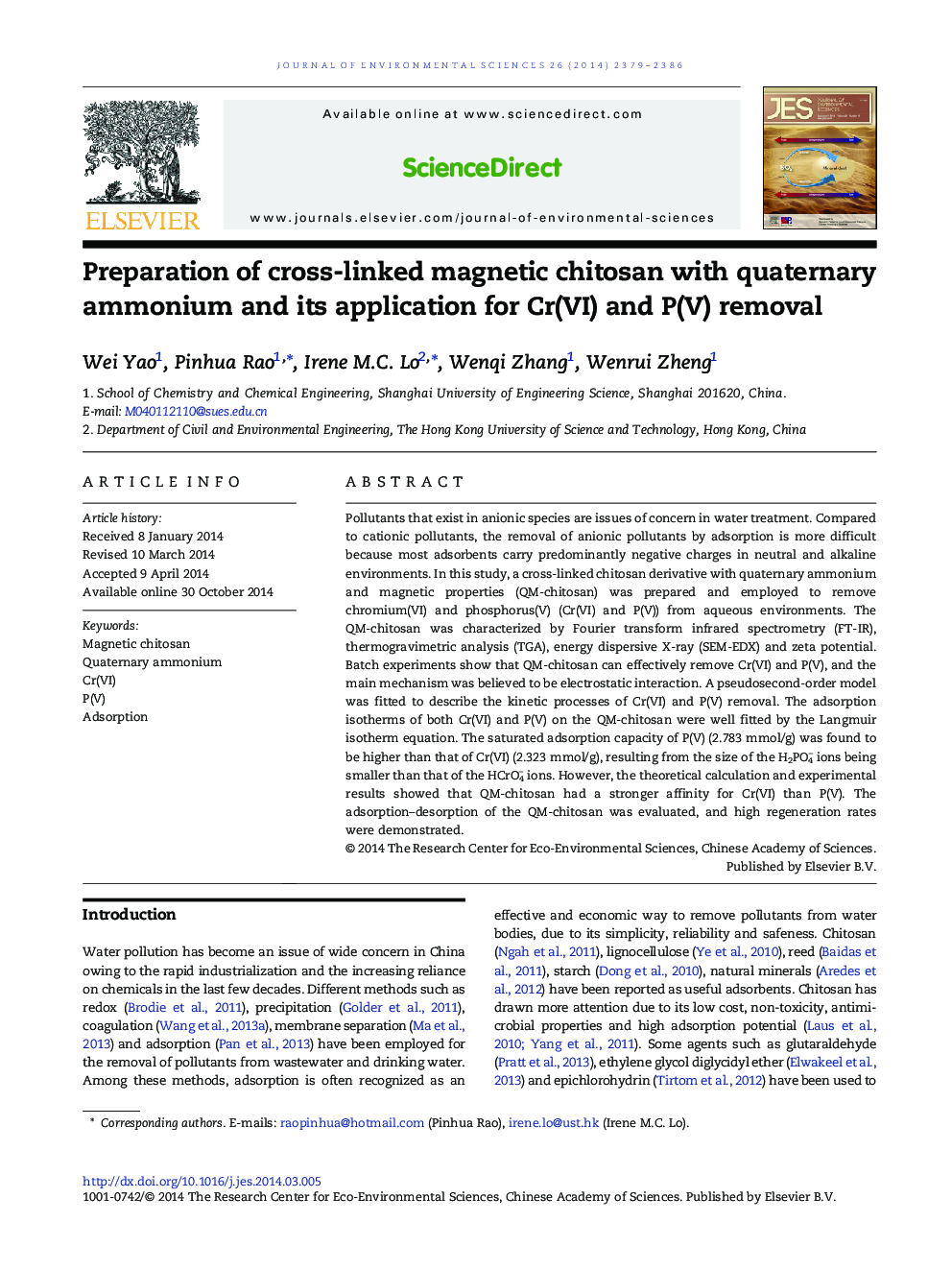| Article ID | Journal | Published Year | Pages | File Type |
|---|---|---|---|---|
| 4454313 | Journal of Environmental Sciences | 2014 | 8 Pages |
Pollutants that exist in anionic species are issues of concern in water treatment. Compared to cationic pollutants, the removal of anionic pollutants by adsorption is more difficult because most adsorbents carry predominantly negative charges in neutral and alkaline environments. In this study, a cross-linked chitosan derivative with quaternary ammonium and magnetic properties (QM-chitosan) was prepared and employed to remove chromium(VI) and phosphorus(V) (Cr(VI) and P(V)) from aqueous environments. The QM-chitosan was characterized by Fourier transform infrared spectrometry (FT-IR), thermogravimetric analysis (TGA), energy dispersive X-ray (SEM-EDX) and zeta potential. Batch experiments show that QM-chitosan can effectively remove Cr(VI) and P(V), and the main mechanism was believed to be electrostatic interaction. A pseudosecond-order model was fitted to describe the kinetic processes of Cr(VI) and P(V) removal. The adsorption isotherms of both Cr(VI) and P(V) on the QM-chitosan were well fitted by the Langmuir isotherm equation. The saturated adsorption capacity of P(V) (2.783 mmol/g) was found to be higher than that of Cr(VI) (2.323 mmol/g), resulting from the size of the H2PO4− ions being smaller than that of the HCrO4− ions. However, the theoretical calculation and experimental results showed that QM-chitosan had a stronger affinity for Cr(VI) than P(V). The adsorption–desorption of the QM-chitosan was evaluated, and high regeneration rates were demonstrated.
